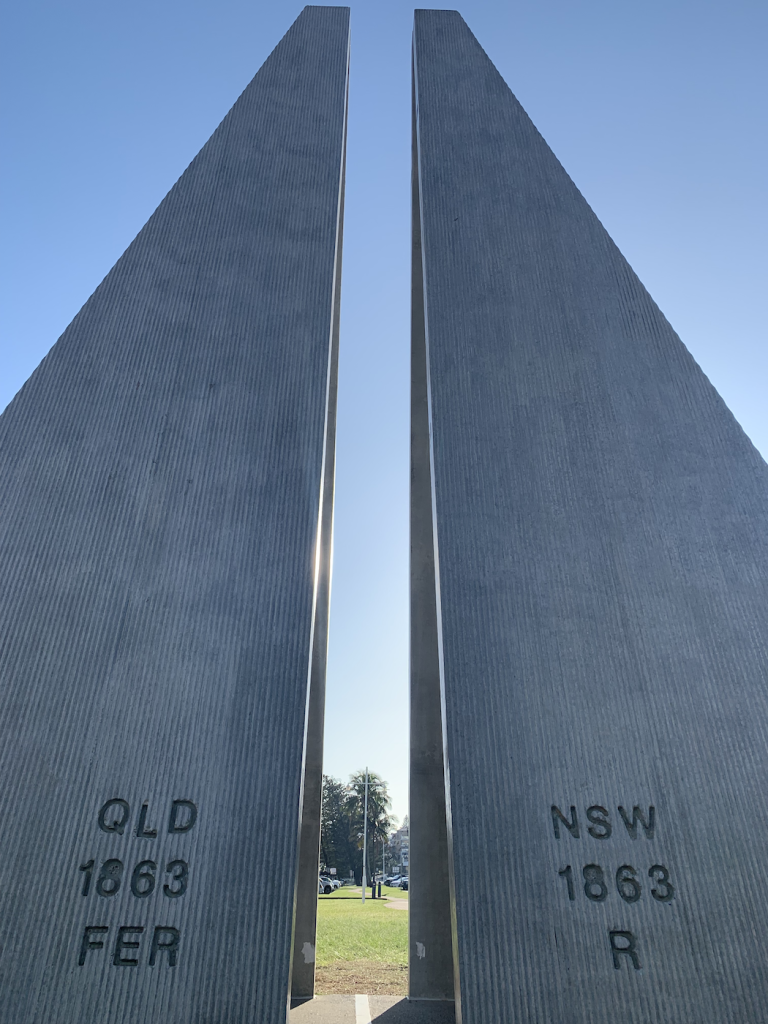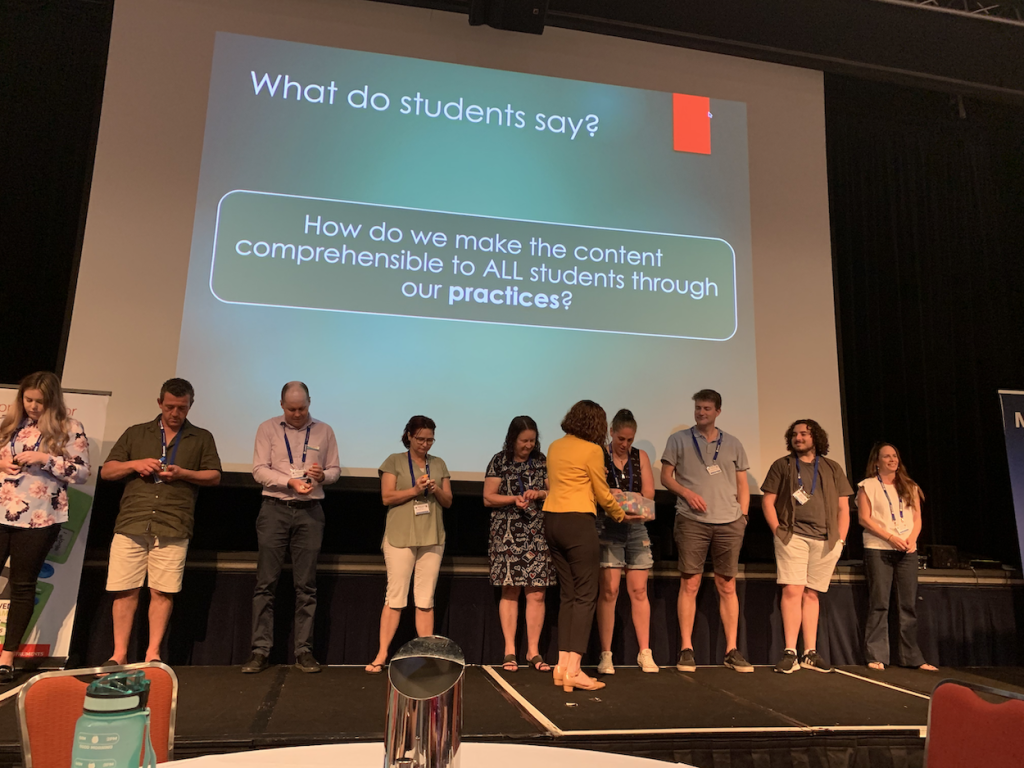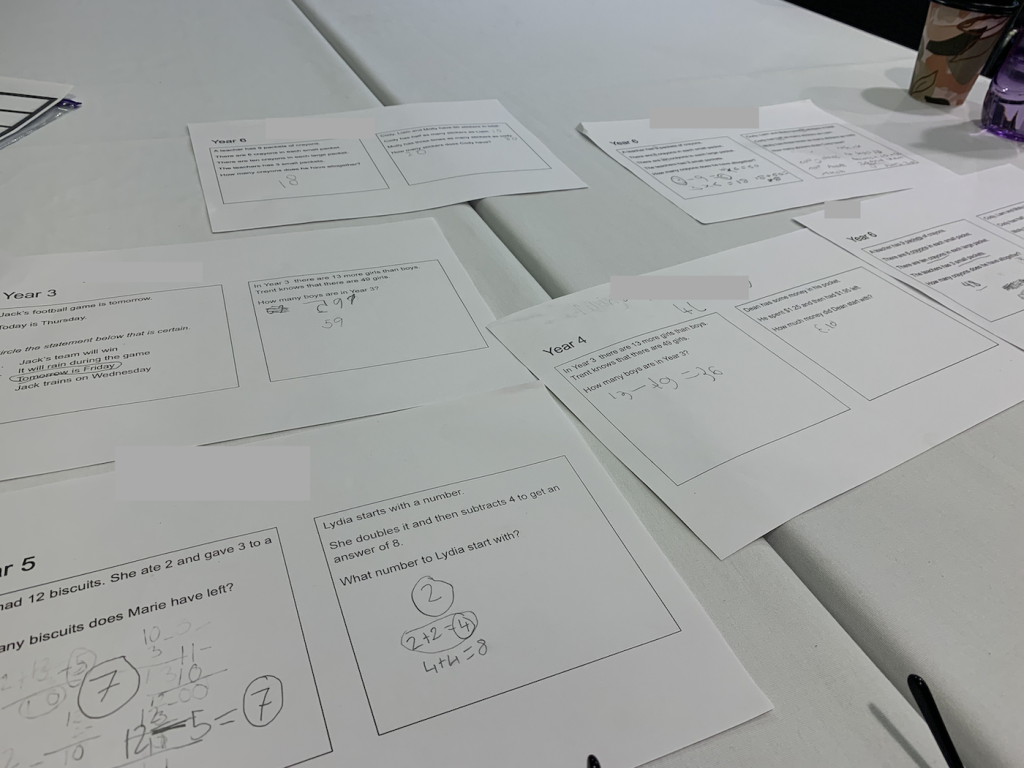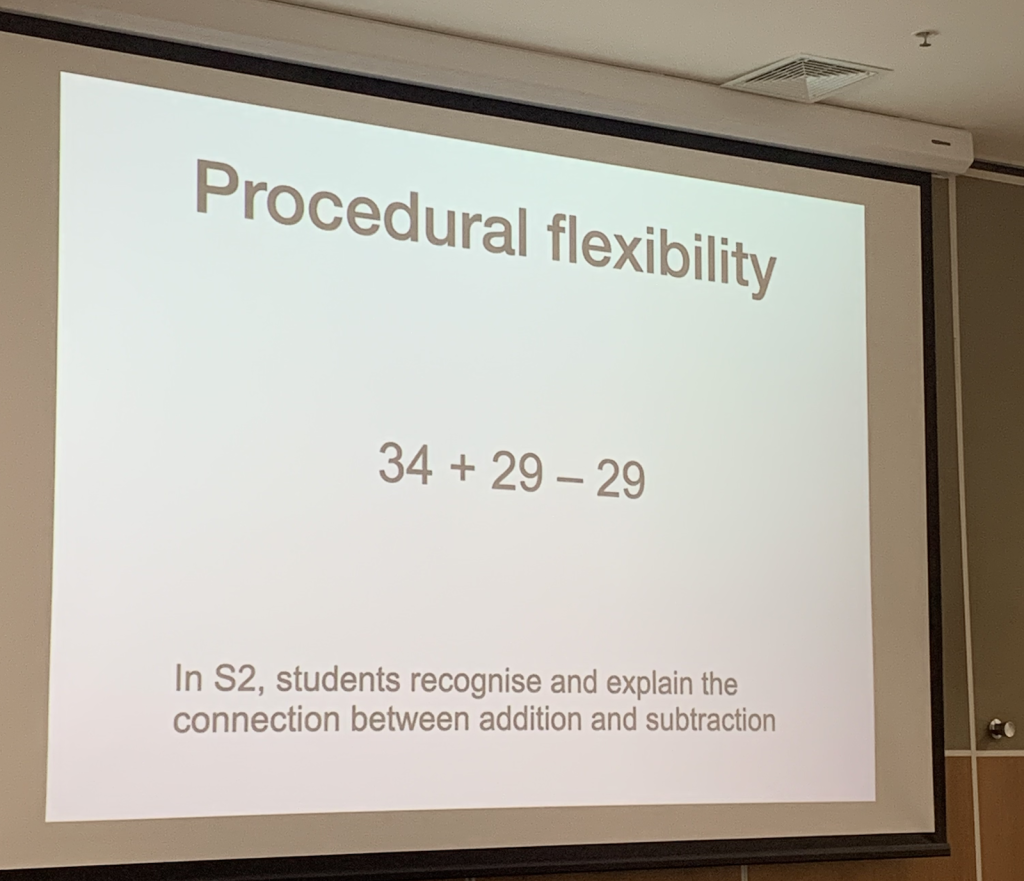What a joy it was to be back attending an in-person conference! We hadn’t had a face-to-face MANSW conference since 2019 so it was great to see many familiar faces as well as meet some new teachers of mathematics. It was a lovely venue in sunny (most of the time) Tweed Heads/Coolangatta. The conference theme was Changing times changing directions which was fitting in relation to both the way our classrooms have changed, are changing, since COVID and also with the new NSW mathematics syllabuses being implemented over the next few years. Here are a few of my highlights, for more posts and comments, check out the Twitter hashtag #mansw22 or MANSW’s handle @MathsNSW.
How do we make the content comprehensible?
Day 1’s keynote was presented by the always engaging Professor Catherine Attard. The session focused on changing practices to ensure all students find the mathematics fun, engaging, and understandable. Catherine shared a number of examples of what this might look like. She mentioned David Souza and the idea of moving from traditional to sense-making classrooms – where students are in-task not just on-task. Catherine also talked about seeing teaching as a dance not a performance. It’s not a one-way show but a back and forth between teacher and student, or student and student. The message was clear, there is not one set of ‘best practice’, but what’s best in the moment (quoted from Peter Grootenboer) where we as teachers need to be uncovering the curriculum (Marilyn Burns) not ‘covering’ the curriculum.
… the site is more than a context in which practices take place—it is an integral part of the happening. This, amongst other things, means that the notion of “best practice” is, at best, an unhelpful myth, and at worst, a damaging misconception that sees all learners, sites, and communities as homogenous. The site-based nature of practices, including mathematics education practices, means one can only talk of “best practices here and now.” (Grootenboer, 2022, The practice of mathematics education p. 3)
Kris shared some work samples of students solving problems and some of the common ways students attempt to solve problems. Such as; looking for numerals and performing any known operation, guessing, answering only the first step of a multi step problem, and getting caught up in the context of the question.
Changing practice through Newman’s Error Analysis
Kris Westcott‘s session on using Newman’s error analysis to determine where her students were struggling with worded problems was fantastic. What I found really interesting was when Kris mentioned the online check-in they use to gather data on how students are progressing, it shows how long students spend on each worded problem. The data indicated that most students spend an average of 20 seconds per question. I wondered what the average time might be for similar online test such as NAPLAN. This is well worth investigating further. Kris shared data on pre- and post- assessments of students while implementing Newman’s 5 prompts across her school and the success they had with moving students beyond not being able to comprehend or translate the problems into mathematics.
What’s your strategy?
Dr Peter Gould‘s workshop explored mental strategies that consider the size of the numbers involved, and how we can support students in learning when to choose and use efficient strategies for the numbers in the question. Peter talked about students having procedural flexibility, there is no point having the procedural knowledge if you don’t know when it use it. Peter said “if you’ve got no flexibility, you just go with what you know”. This statement rang true with my own teaching experiences where students apply the one strategy they know to every problem, not taking the time to consider other pathways that may be more efficient. Peter related this to when you have only one tool in your tool box (a hammer) you treat everything as a nail. Some great tasks and strategies were shared in relation to using levelling, inverse operations and constant difference.
You can teach “in connection with culture” Chris Matthews speaking about teaching culture = deep learning @MathsNSW #MANSW22 pic.twitter.com/tBzgESpgTM
— katherin cartwright (@kath_cartwright) September 26, 2022
Other highlights from the conference were Dr Chris Matthew‘s keynote on Teaching Culture = Deep Learning exploring teaching from a cultural perspective as a pedagogy and using the Goompi model. Daniela Elford and Jacqui Lyon’s workshop on Transforming the area model was also excellent. We use the area model in primary school for connections between area, 2D shape and multiplicative relationships, it was great to see the different ways it’s being used in secondary schools as well. The session presented by Thomas Pollard and Sarah Warry was also great, lots of great resources I already use like Robert Kaplinsky‘s open middle, but they also shared some I hadn’t used like slow reveal graphs, I recommend you check them out! If you or your school are a member of MANSW, you can access many of the conference presentations via the MANSW community.
Hadn’t seen slow reveal graphs before! @MathsNSW #mansw22 thanks Thomas and Sarah - @misterwootube your growth team are doing you proud today! pic.twitter.com/MVaMRXx7sn
— katherin cartwright (@kath_cartwright) September 26, 2022
References
Grootenboer, P. (2022). The practice of mathematics education. N. Fitzallen, C. Murphy, V. Hatisaru, & N. Maher (Eds.), Mathematical confluences and journeys (Proceedings of the 44th Annual Conference of the Mathematics Education Research Group of Australasia, July
3‒7), pp. 1‒8. Launceston: MERGA.









